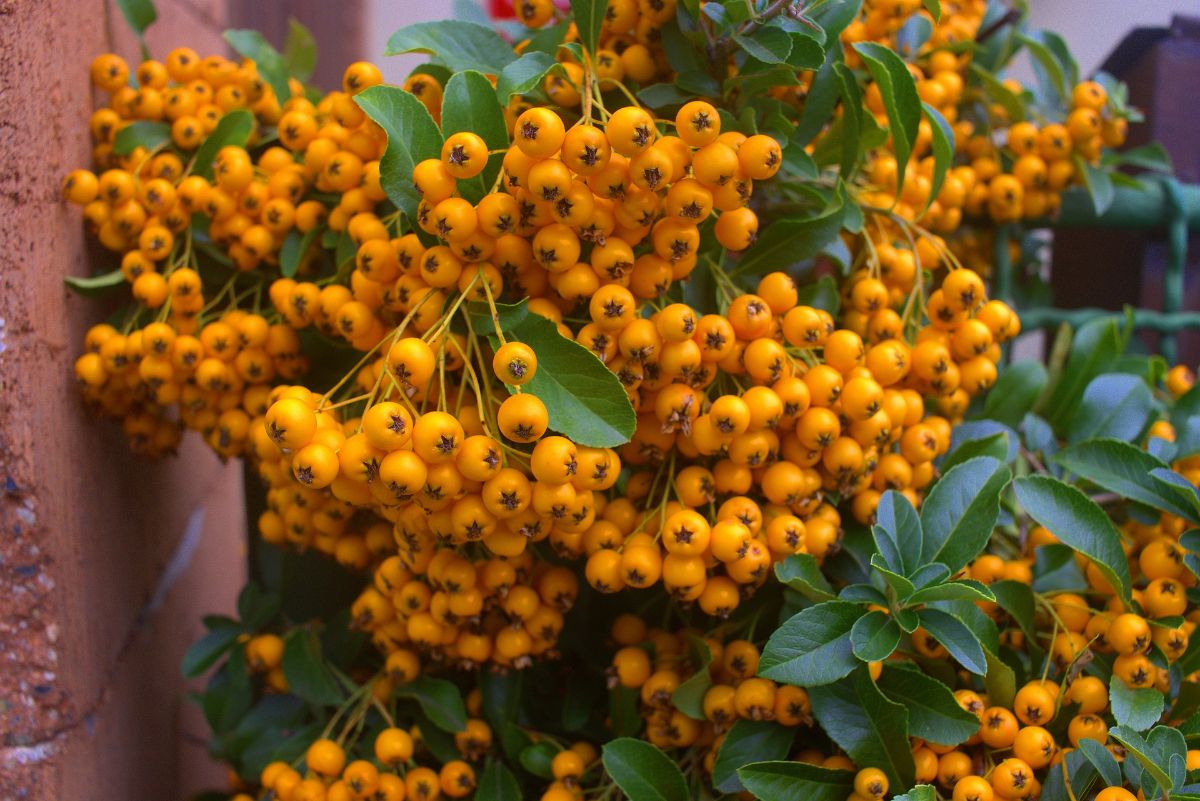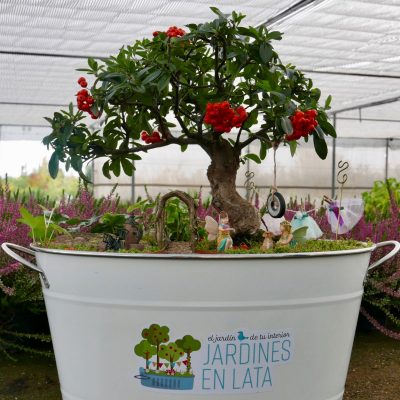
Many times we think that the bonsai they sell in supermarkets every x time are the "easiest" and that all the others, due to their high price, are going to be more complicated to care for. However, you might be surprised. Especially with him pyracantha bonsai.
Do you know what this bonsai is? And the care you need? From now on we anticipate that it is much easier to take care of than a serissa, a Carmona or even a Sageretia (which are the usual ones in stores that sell for 5-8 euros). Do you want to know it?
Pyracantha bonsai, the easiest firethorn to care for
Pyracantha bonsai is also known as firethorn. It is one of the most beautiful bonsai you can find. But also one of the easiest to take care of.
To begin with, you should know that its name comes from the Greek, specifically from two words. On the one hand «pyr», which means fire; on the other, «akantha», which means «thorns».
Now, do not be scared or think that it is going to be a bush (because it is a bush although in bonsai you see it as a tree) that punctures. It does, but it's not like a cactus, much less if you're careful.
What is the most striking thing about this bonsai? Two things:
- All the white flowers That throws in spring, they cover the whole bush (and it's an incredible sight).
- The colored fruits. The most common are oranges, but you could also find pyracantha bonsai with red fruits. These are kept until fall in many cases, and they look like clusters of tiny grapes that give them a beautiful appearance.
In fact, and about these fruits, it was formerly thought that, if you used them to make an infusion, it helped you cut diarrhea, as well as the flow of menstruation in women. And in the case of the root, to heal and as an anti-inflammatory of stinger or thorny wounds.
Caring for pyracantha bonsai
Now that you know a little more about pyracantha bonsai, then we want you to see what are the care you need to stay alive and in perfect condition. We already anticipate that it is not so difficult.
Location
It is important that you have it always away from home. That is, it is outside. And it is that it needs sun to develop well, but above all, to avoid pests and diseases that can attack it.
Temperature
Holds heat and cold well, but it is true that it must be protected from extreme heat and extreme cold. How? Well, in the case of cold, you could put it under cover or in a greenhouse. In case of heat, place it in the shade. It is not necessary to be moving it around depending on the temperature. In fact, it is the worst thing you can do because bonsai do not handle changes very well.
Irrigation
Let's talk about how much you have to water this bonsai. The truth is that it is one of those you have to make sure that the earth never dries up. It is true that firethorn bonsai tolerates drought briefly, but if it spends many days with the need for water and you do not give it, it will affect its health, especially by causing the flowers and fruits to fall and the leaves to wilt. .
In general everything will depend on where you live. If you are in a place where summers are hot, we recommend that you water 3-4 times a week. If it's not that hot, 3 would be more than enough. Who is going to tell you is the bonsai and on the land of this.
In winter you have to water it much less, especially if it is outside. That is, 1-2 times a week will be more than enough.
When it comes to watering, focus only on the earth, do not water over it because if the leaves get wet they may not reach fruit.
Subscriber
The pyracantha bonsai must be fertilized from March to September. Some even do it in the fall to prepare it for winter (at that time they rest).
And which one would be the best? Well, those that have a high level of nitrogen are the most suitable for it to grow quickly. But if you want it to bloom a lot and have a lot of fruit, better one low in nitrogen.
Transplant
The best soil for this type of bonsai is a mixture of substrate with akadama. It must be transplanted every 3-4 years (adult specimens) or every 2-3 years (young). When to do it? Better in March so that you do not suffer in winter or have the possibility of getting sick in those months.
Plagues and diseases
This is the 'Achilles heel' of bonsai, which is very prone to pests and diseases. The most common are aphids (which you can eliminate with pesticides or common products against pests), fire blight (something very rare), or the fire plague, a disease that can attack you.
In general, if you observe it often you will realize that something is wrong and you would only have to apply a product to solve the problem. In certain cases it is better to cut off those infested branches or leaves and then apply the product. If all goes well and the disease or plague has not weakened it, it will sprout again easily and in a short time.
How much do these bonsai cost
If after what we have told you you are excited or you would like to have a pyracantha bonsai, the price is not that it can turn you back. Of course, you will not find it between 5 and 10 euros, because there are none. But yes you can find them from 30 euros. For approximately this price you will find many young prebonsai and bonsai that are not bad specimens, on the contrary, it will help you to know them more and see their development.
As we have told you, they are very resistant and easy to care for (they hardly need anything) so you will not have a problem if you follow the care that it dies.
The decision is yours, but, and personally, I threw that it is one of the most beautiful, that it grows fast and that also leaves you a beautiful picture when it blooms and when it has those little balls. You have more questions? Do not hesitate and contact us.


